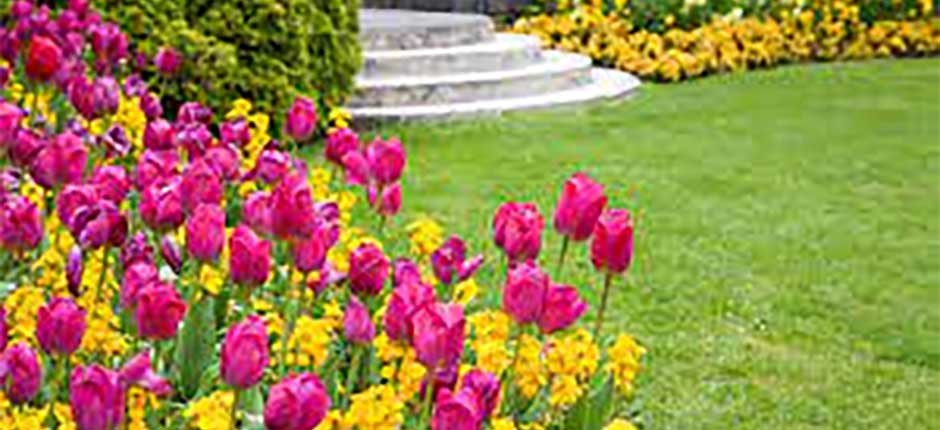Numb fingers, chattering teeth, risk of frostbite, short days, and blankets of snow – these are part of winter and can make it hard to keep up with outdoor responsibilities such as yard upkeep. If you prefer not to deal with the cold, consider Yepez Landscaping in Ann Arbor, MI. You can bank on the service provider for top-tier craftsmanship and quick turnaround times.
In short, the firm can help your yard combat the cold and blustery weather, ensuring your plants make it to springtime unscathed or with fewer battle scars. But if you’re up for the challenge of revitalizing your yard in winter, you can avert the ravages of the cold season in the following ways:
1. Replenish Your Mulch
New mulching material can have a dramatic effect on a winter-worn yard. Winter is often a tough time in your garden. With that in mind, consider refreshing the mulch in your yard before the long winter sets in.
Mulch is protective, helping to insulate and protect your plants from winter’s harsh elements. Think of it as a jacket for your plants. The additional layer of mulch in your garden helps retain moisture, blocks weeds, promotes airflow, and can keep pests away.
Consider materials like cocoa shells, bark chips, or pine needles as replacements for the old mulch. While at it, ensure the new layer is at least two inches thick for maximum insulation.
2. Trim Your Trees and Shrubs
This may seem counterintuitive, but properly pruning trees and shrubs can help them overcome a harsh winter. Trimming helps reduce a plant’s exposure to strong winds, frost damage, pests, and diseases that could affect their growth or appearance in subsequent seasons. Likewise, it helps remove dead or dying branches, clearing up space for new growth in the spring.
Some plants require a gentle hand, implying you should understand the tree species in your yard, growing habits, and their age before reaching for the pruning shears. Also, late winter or early spring is usually an ideal time to prune most plants. Generally, wait until after the first frost before trimming mid-sized trees and shrubs, and prune large trees a few weeks after the last frost.
3. Add Winter-Friendly Color
Though it’s tempting to ignore the yard in winter, adding a few winter-friendly touches can perk it up. Consider planting some colorful blooms that thrive during the cold season. To that end, pansies, witch hazel, cyclamen, and hellebores are a perfect addition.
You may also add a pop of color to your yard with seedpods like ornamental grasses or dried flower heads. Likewise, incorporate crabapple or pyracantha trees into the landscape design as their brightly colored fruits thrive during the winter.
The idea is to prepare for the coming season by adding colorful pieces to provide visual interest during winter. While researching your options, ensure the plants or trees you pick can survive in a cold environment.
4. Protect Your Potted Plants
Potted plants add a pleasing aesthetic to your yard. However, they may not always thrive in the bitter cold. To help them survive, consider investing in protective pieces like frost covers or plant wraps. Other measures like wrapping the pots in bubble wrap or keeping the plants on a sheltered porch can make all the difference during winter.
You don’t need to cover the entire plant – just the root ball should do. And while at it, keep in mind that plants need light and air to breathe, even during winter. Therefore, don’t suffocate them hoping to protect them from the cold.
Alternatively, you can move the plants indoors to an area with enough light and proper humidity. That way, when spring arrives, you can relocate them outdoors as the weather warms.
5. Eliminate Pests and Diseases
Winter is usually a dormant season for pests, but that doesn’t mean they won’t wreak havoc given the right conditions. To protect your plants, consider removing pests or diseases before winter sets in – inspect them for signs of infestation and treat them accordingly.
Thus, a natural insecticide or fungicide will suffice to prevent pests from attacking your garden during winter. While at it, destroy fallen leaves that can harbor diseases by composting them.
Likewise, consider covering vulnerable plants with a floating row cover for added protection. Or, you can use a pest repellant like neem oil to chase away insects.
Wintertime offers a great opportunity to reassess your yard and adjust for the coming season. Help your plants stay safe and healthy during winter by taking action. And soon enough, your yard will reward you by coming alive with beautiful blooms and foliage.



